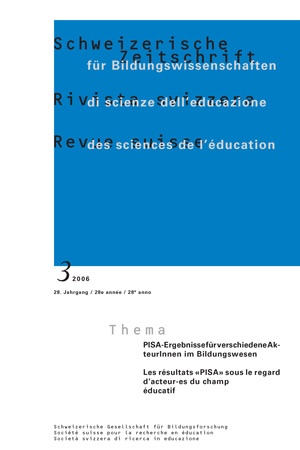Development of reading competence: Measures – Measurements – Effects
DOI:
https://doi.org/10.24452/sjer.28.3.4734Abstract
Following findings of the 2000 and 2003 PISA Studies, the intervention study Promoting Reading- and Writing Competencies examines the effectiveness of measures schools take regarding children’s and adolescents’ reading accomplishments. The study is based on a comprehensive reading competence model, which is not aligned solely to functionality. Two different methods of instruction were used in 61 school classes (3rd / 4th and 7th / 8th school years, approximately 1100 learners): an open approach to reading and writing promotion, which supports interest-led individual reading, as opposed to a narrowly stipulated systematically guided training programme. Learning improvements are measured with an ensemble of instruments. Questionnaires survey attitudes and literal behaviour in leisure time; different tests (stumbleword test, ELFE and a specially developed Test for the Evaluation of Emphatic Reading Achievement – Test zur Ermittlung empathischer Leseleistung (TELL)) measure literal accomplishments. This permits the presentation of differentiated findings on the effectiveness of each of the different promotion methods relating to various samples and to different aspects of reading competencies. It also permits assertions regarding the effects of the two instruction methods. At time t1, after the first intervention, a strong increase was observed in reading activity and in particular in leisure time reading namely within interest-led reading in the open approach, as compared to traditional instruction. Conversely, basic competencies developed better in traditional instruction. Moreover, differential effects were observed between children and adolescents.
Downloads
Downloads
Published
Issue
Section
License

This work is licensed under a Creative Commons Attribution 4.0 International License.



